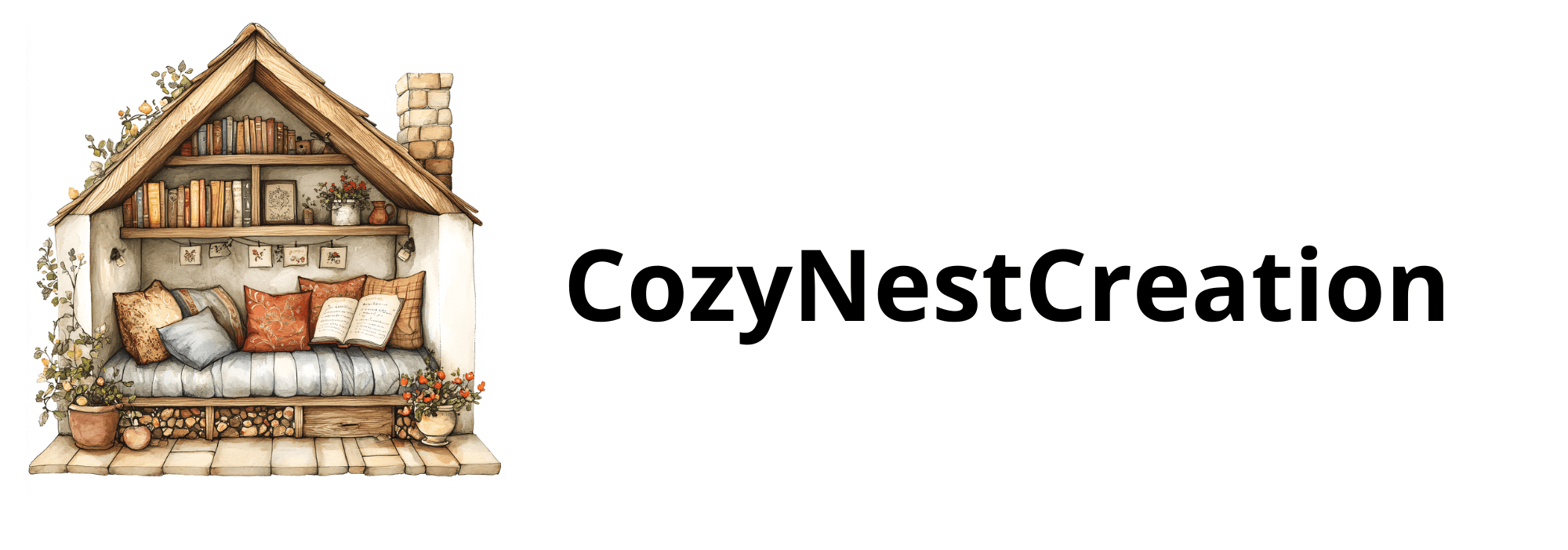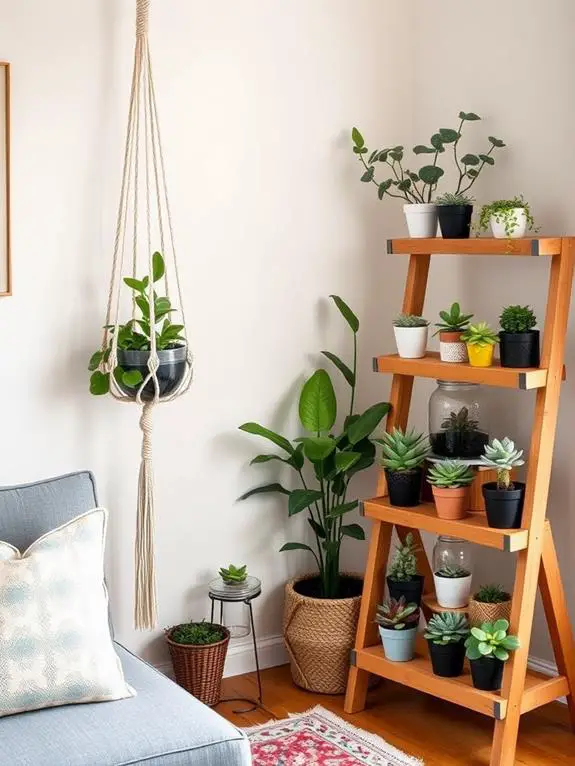Transform your home into a lush green paradise without breaking the bank. You can upcycle household items like teapots and tin cans into unique planters, adding character and sustainability to your decor. Get creative with DIY plant stands using simple materials like wooden crates or copper pipes. Expand your collection by propagating your own greenery through water propagation or leaf cuttings. Hunt for one-of-a-kind accessories at thrift stores, from brass planters to macramé hangers. Maximize vertical space with creative plant wall displays using repurposed pallets or floating shelves. These budget-friendly ideas will help you cultivate a cozy, green oasis that reflects your personal style. Explore further to uncover more innovative ways to bring nature indoors.
Key Takeaways
- Upcycle household items like teapots and tin cans into unique plant containers, ensuring proper drainage.
- Create DIY plant stands using simple materials like wooden crates or PVC pipes for a personalized touch.
- Propagate your own plants through water propagation or cuttings to expand your collection cost-effectively.
- Source affordable plant accessories from thrift stores, including vintage pots, baskets, and macramé hangers.
- Design creative plant wall displays using repurposed items like wooden pallets or pegboards to maximize vertical space.
Upcycled Containers for Plants
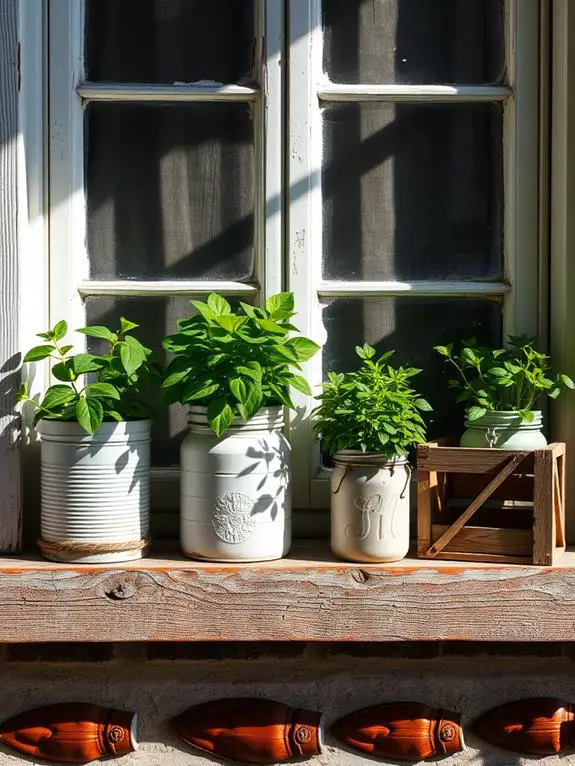
Looking to add some greenery to your space without breaking the bank? One of the easiest ways to create budget-friendly plant decor is by upcycling containers you already have. Take a stroll around your home and look for items that could house your leafy friends. That old teapot gathering dust? It's perfect for a small succulent. Those tin cans from last night's dinner? They'll make charming herb planters with a coat of paint. If you're feeling inspired by the season, consider cozy winter decor ideas to transform your attic into a plant paradise, combining warmth and greenery for a unique living space.
Don't stop there – wooden crates, vintage suitcases, and even old boots can become unique homes for your plants. Just remember to add drainage holes to prevent root rot. With a little creativity, you'll transform everyday objects into eye-catching planters that tell a story and add character to your space. Your wallet and the environment will thank you!
DIY Plant Stands
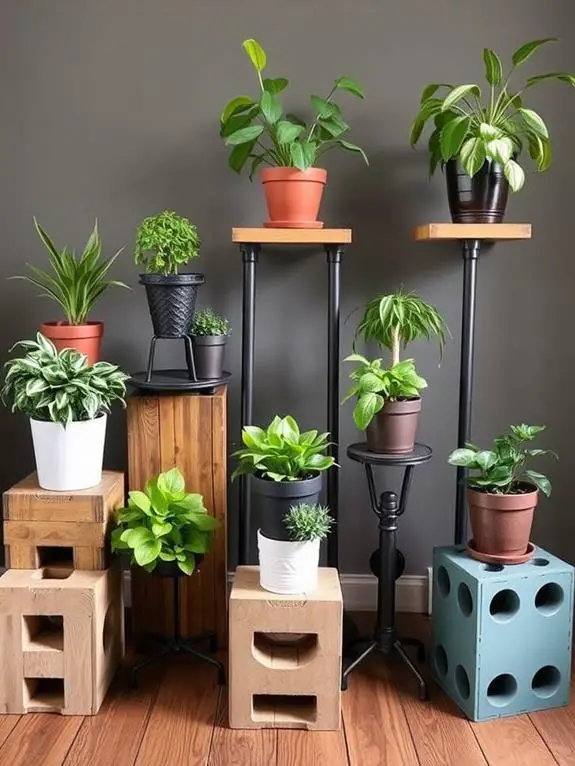
Anyone can elevate their plant game with DIY plant stands that are both stylish and budget-friendly. Transform your living space with simple materials like wooden crates, copper pipes, or repurposed furniture. Picture a charming ladder-style stand made from reclaimed wood, its rustic charm adding warmth to your room. Or imagine a sleek, modern design crafted from PVC pipes, painted in your favorite hue to complement your decor. You'll feel a sense of pride and accomplishment as you display your beloved plants on stands you've created with your own hands. Don't be afraid to get creative – use old suitcases stacked on top of each other, or repurpose a vintage bar cart. With a little imagination and some basic tools, you'll soon have unique plant stands that reflect your personal style and nurture your green thumb.
Propagate Your Own Greenery
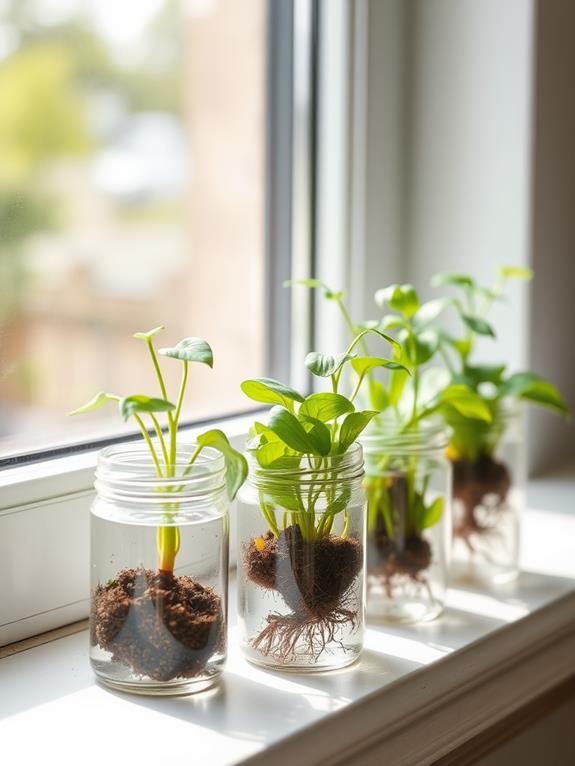
While buying new plants can be expensive, propagating your own greenery is a cost-effective way to expand your collection. It's a rewarding process that allows you to nurture new life from existing plants. You'll feel a sense of accomplishment as you watch tiny roots and leaves emerge from cuttings or divisions. To get started, try these simple propagation methods:
- Water propagation for succulents and vines
- Leaf cuttings for plants like snake plants and begonias
- Stem cuttings for herbs and woody plants
- Division for crowded perennials and bulbs
With patience and care, you'll soon have an abundance of new plants to fill your home or share with friends. During this process, you might experience temporary limitations in accessing online plant care resources due to site maintenance. The gentle rustling of leaves and the earthy scent of soil will create a tranquil atmosphere as you tend to your growing green family.
Thrift Store Plant Accessories
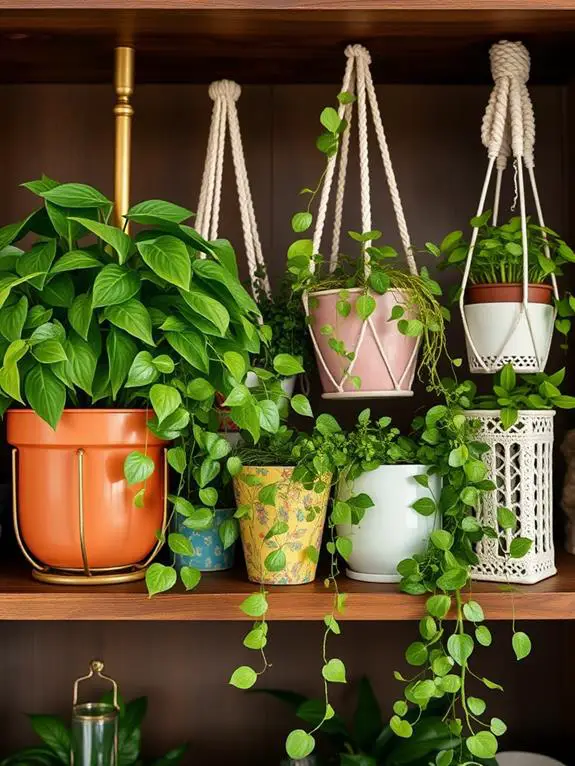
Once you've expanded your plant collection through propagation, it's time to think about how to display your new green friends. Thrift stores are treasure troves for unique and affordable plant accessories. You'll find an array of charming pots, quirky containers, and vintage stands that can breathe new life into your indoor garden. Keep an eye out for brass planters, retro ceramic dishes, or even old teapots that can be repurposed as plant homes. Don't overlook woven baskets or macramé hangers, which add texture and warmth to your space. As you browse, imagine how each piece might complement your plants and existing decor. Consider extending your plant decor to your outdoor spaces as well, creating a stunning fall entrance that welcomes guests with seasonal charm. Remember, mismatched items can create a cozy, eclectic look that's full of personality. With a bit of creativity and patience, you'll curate a delightful collection of plant accessories that won't break the bank.
Creative Plant Wall Displays
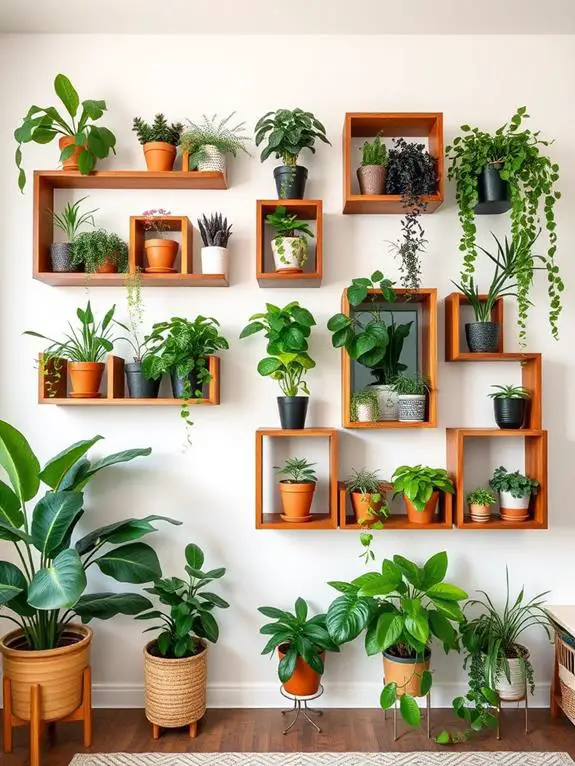
Plant walls are a stunning way to maximize vertical space and create a living work of art in your home. They're perfect for adding a touch of nature to any room, from your cozy living area to a bright kitchen corner. Even in the winter months, you can transform your pool area with lush greenery, bringing warmth and life to the space. To create your own budget-friendly plant wall, consider these creative ideas:
- Repurpose wooden pallets as vertical planters
- Use floating shelves to display small potted plants
- Hang macramé plant holders at varying heights
- Install a pegboard and attach small pots with hooks
You'll be amazed at how these simple solutions can transform your space. Imagine the gentle cascade of trailing vines or the lush green foliage bringing life to a once-bare wall. As you tend to your living masterpiece, you'll find joy in watching it grow and evolve, creating a calming oasis in your home that's uniquely yours.
Frequently Asked Questions
How Often Should I Water My Indoor Plants?
Lush, thriving plants or wilted, drooping leaves? The key lies in your watering routine. You'll want to tailor your approach to each plant's unique needs. Generally, you should water most indoor plants when the top inch of soil feels dry to the touch. However, some plants prefer to dry out completely between waterings, while others thrive in consistently moist soil. It's best to research your specific plants and observe their responses to develop a personalized watering schedule that keeps them happy and healthy.
What Are the Best Low-Maintenance Plants for Beginners?
You'll love these beginner-friendly, low-maintenance plants! Start with a tough snake plant, which thrives on neglect and purifies the air. The charming pothos is another great choice, with its cascading vines that brighten any room. ZZ plants are nearly indestructible, perfect for forgetful waterers. Succulents, like jade or aloe, store water in their leaves and need minimal care. Don't forget the peace lily, which tells you when it's thirsty by drooping slightly. These plants will make your home feel alive without demanding too much attention.
How Can I Prevent Pests in My Indoor Plants?
To prevent pests in your indoor plants, you'll want to create an environment that's unwelcoming to unwanted visitors. Start by inspecting new plants before bringing them home. Keep your plants clean by gently wiping leaves with a damp cloth. Guarantee proper watering and drainage to avoid soggy soil, which attracts pests. Use natural deterrents like neem oil or a mixture of water and mild soap. Regularly check for signs of infestation, and if you spot any, isolate the affected plant immediately.
Which Plants Are Safe for Homes With Pets?
Did you know that over 60% of American households have at least one pet? If you're a pet owner looking to add some greenery to your home, you'll be delighted to know there are plenty of pet-safe options. Spider plants, Boston ferns, and African violets are all wonderful choices. These beauties not only purify the air but also add a touch of nature to your living space. Remember, it's always best to double-check with your vet before introducing new plants to your pet-friendly home.
How Do I Choose the Right Potting Soil for Different Plants?
When choosing the right potting soil for your plants, you'll want to take into account their specific needs. Start by understanding your plant's natural habitat. For succulents and cacti, you'll need a well-draining mix with sand. Tropical plants thrive in moisture-retaining soils with peat moss. Most houseplants do well with a general-purpose potting mix. Don't forget to check the soil's pH level, too. If you're unsure, ask your local garden center for advice tailored to your green friends.
